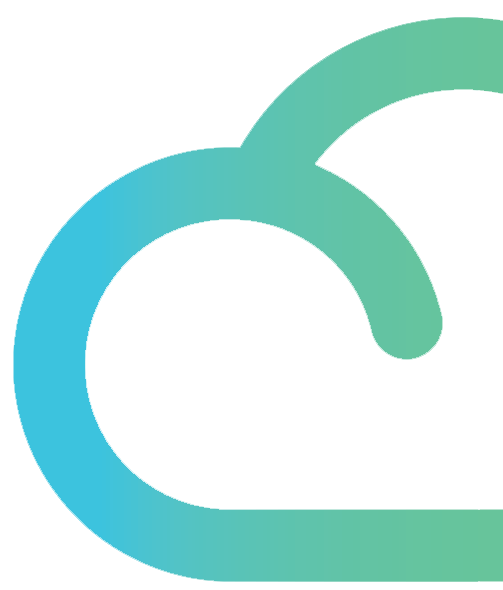There’s no doubt about it, the terminology of cloud computing can be overwhelming. And if you’re looking to optimise your business with cloud computing solutions, you need to understand what everything means. Otherwise, how can you decide which option is best for you?
Don’t worry – we’re here to help. Read on for our lingo guide to help you get your head round cloud computing terminology.
Cloud Application
Our alphabetical list conveniently starts at C. A cloud application – or cloud app – is the software you access online instead of installing it on individual computers.
Cloud Application Management for Platforms
Often abbreviated as CAMP, this specification makes it easier to manage applications across cloud computing platforms – both public and private.
Cloud Backup
Cloud backup is the process of backing up your data. Where? The cloud of course. This is a remote network of connected servers, which ensure your data is never lost.
Cloud Backup Service Provider
An external company that provides you with access to the cloud and manages the remote backup servers that make up the cloud.
Cloud Computing
Put simply, cloud computing is internet-based computing. Remote servers provide all the computing resources to computers and other devices on-demand, without the need for them to store it individually. It’s quicker, more powerful and more secure.
Cloud Computing Accounting Software
Accounting software can be stored in the cloud too. Much like other cloud computing applications, the software is hosted on remote servers. It allows for much larger amounts of data to be dealt with by sending it to remote servers to be processed.
Cloud Computing Reseller
Resellers of cloud computing purchase the hosting services from a primary provider of cloud servers or cloud computing. They then re-sell these services to their customers.
Cloud Enablement
This is the creation of a cloud environment. It enables infrastructures, software or resources to be moved to remote servers, so an organisation can shift their operations to the cloud.
Cloud Management
Cloud management technology is the software that operates and monitors anything stored in the cloud. It’s what ensures all companies using cloud computing solutions can access their resources with ease.
Cloud Migration
Cloud computing makes things quicker, easier and more secure. But how do you get to the cloud? It’s simple – cloud migration. This is the process of moving all data and applications from the current onsite computers to the external servers. It also applies to the process of moving from one cloud environment to another.
Cloud Portability
In normal use, portability is the ability to be moved easily. This is no different in cloud computing terminology. Cloud portability is the ability to move applications, data or resources from one set of remote cloud servers to another.
Cloud Provider
Ok, some bits of terminology are simpler than others. A cloud provider is the company who provides the storage and software necessary to use the cloud.
Cloud Provisioning
This is the first step in rolling out the cloud from the customer’s point of view. A customer is allocated certain resources from the cloud provider. It requires the provider to develop virtual machines and allocate a certain amount of their server space to support them.
Cloud Server Hosting
Cloud server hosting is when hosting services are accessed by customers using the internet. Instead of having their own servers, or even using virtual servers, their different applications are hosted by the network of remote servers that make up the cloud.
Cloud Storage
Quite literally, cloud storage is the storage of data in the cloud. Ok, not so literal. It’s the storage of data in remote servers, known as the cloud. This can be accessed from multiple devices, so it simply takes the hefty storage requirements away from individual computers or servers.
Cloud Testing
To assess the capability of cloud services, providers often test the loading and performance speeds. This simply checks that applications and services run properly and can be accessed easily. It ensures the best performance.
Cloudware
Cloudware is a bit of cloud computing terminology derived from the two things that make it up – software and the cloud. Put simply, it is software that allows you to create, install, run and manage applications within the cloud.
Cluster
A cluster is a group of computers that are linked by a local network. They work together as a single system, allowing for continual uptime. This is usually for high availability, which enables load balancing and backup.
Consumer cloud
The consumer cloud is essentially cloud computing offered to individuals. Apps like Dropbox, Google Drive or iCloud enable personal access to the cloud for small scale use.
DaaS
DaaS is short for desktop-as-a-service. It’s the infrastructure required for a virtual desktop or hosted desktop, which gives you access to a desktop through the cloud. Storing all of your data and applications externally, DaaS lets you have a desktop interface without the risk of data loss, without the need for internal servers, and without any scalability or upgrade issues.
DBaaS
Database-as-a-Service, or DBaaS for short, is a database in the cloud. It allows huge databases to be stored on external servers and accessed instantly, on demand by users. Because they are stored in the cloud, these databases are scalable and far more secure.
Enterprise Application
These are applications or software used by businesses to assist with anything enterprise related. Because these applications are usually too large for many internal servers, they usually require cloud-based solutions for small businesses to access them.
Enterprise Cloud Backup
This is a type of cloud back-up with certain features required for enterprise. Things like disaster recovery and archiving are added to standard cloud backup to make it enterprise graded.
External cloud
An external cloud is simply when the remote servers necessary for cloud access are provided by an external, third-party organisation.
Hybrid Cloud Storage
Scientifically, hybrids combine two different elements or species. Similarly, hybrid cloud storage combines two different types of cloud storage – namely, public and private. Some companies will store some data, usually that’s more critical to them, in a private cloud. But they will also have public cloud access to store some of their other data or applications.
IaaS AKA Hardware-as-a-Service
Infrastructure-as-a-service, or IaaS, is the provision of virtual computing infrastructure as a service rather than an outright purchase. It removes the price barrier for small businesses who need outsourced software and servers. Rather than the high cost of buying software and servers, they are billed on usage, which can be increased and decreased whenever required.
Mobile Cloud Storage
As the name suggests, mobile cloud storage is cloud storage that can be accessed from a mobile device. Data from the device is stored in the cloud and can be accessed from anywhere at any time, as long as the user has internet access.
Multi-Tenant
Multi-tenant services are those which serve multiple customers. Because cloud services are so vast, they quite often cater for several different users at once. This doesn’t have an impact on speed or efficiency though. It simply means providers only need to run one multi-tenancy infrastructure.
On-demand service
If a service is on-demand it means customers can purchase resources or services as and when they need them. It means if additional servers are required for a particularly large project, they can be purchased temporarily and dropped following completion.
Online Backup
Online backup is one of the main perks of cloud storage. Your data is stored in remote servers to prevent loss. So whether there is a hardware fault or even a fire, you can rest assured your data is safe when it is backed up online.
PaaS
Short for Platform-as-a-Service, PaaS simply refers to the provision of a computing platform. This includes things like the operating system, database and web server, which are stored in the cloud.
Private Cloud
Also known as an internal cloud, this phrase describes cloud computing solutions that are run internally. A company’s IT department controls the private cloud, which provides the same data backup and storage as external cloud services. The drawback is that it doesn’t provide the same level of security.
SaaS
Software-as-a-service provides companies with online access to software through the internet. It removes the company’s need for software storage, maintenance and licensing, which are all covered by the service provider
Vertical Cloud Computing
While regular cloud computing is available for any purpose, vertical cloud computing has been developed for a particular industry or “vertical”. Industries, such as healthcare, benefit from cloud computing solutions with specific functions or options added on. It basically optimises the cloud for their needs.
XaaS
Last on the list is XaaS. It stands for X-as-a-service, more commonly referred to as anything-as-a-service. It refers broadly to the diverse range of services available from cloud computing, setting them apart from similar services provided internally.
Cloud computing solutions
As well as a guide to cloud computing terminology, Green Cloud Hosting can provide your business with tailored cloud computing solutions. From hosted desktops to online backup, we have the services you need to secure your data and optimise the way your business operates. Claim your free trial today to see how cloud services can help you.








